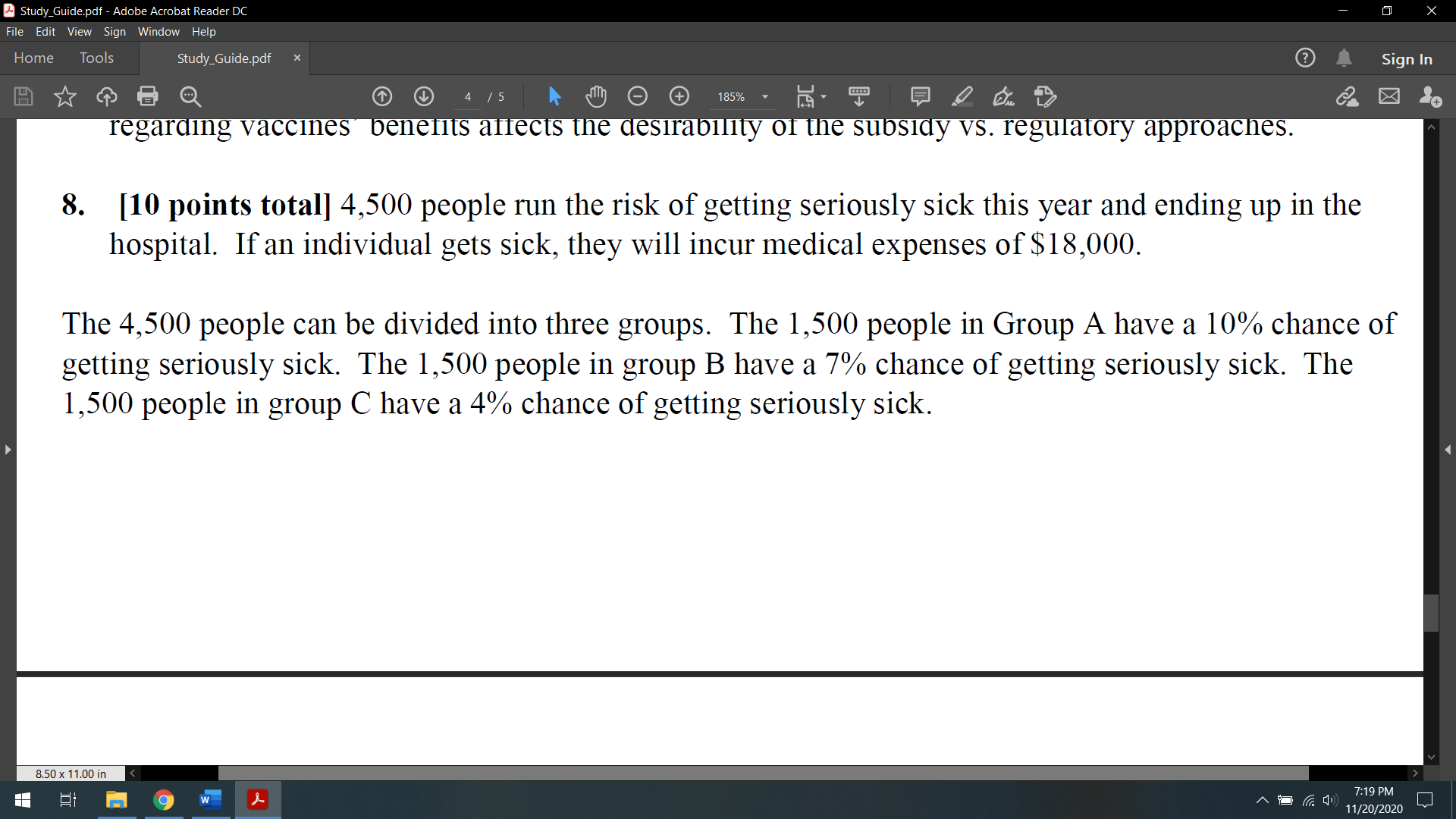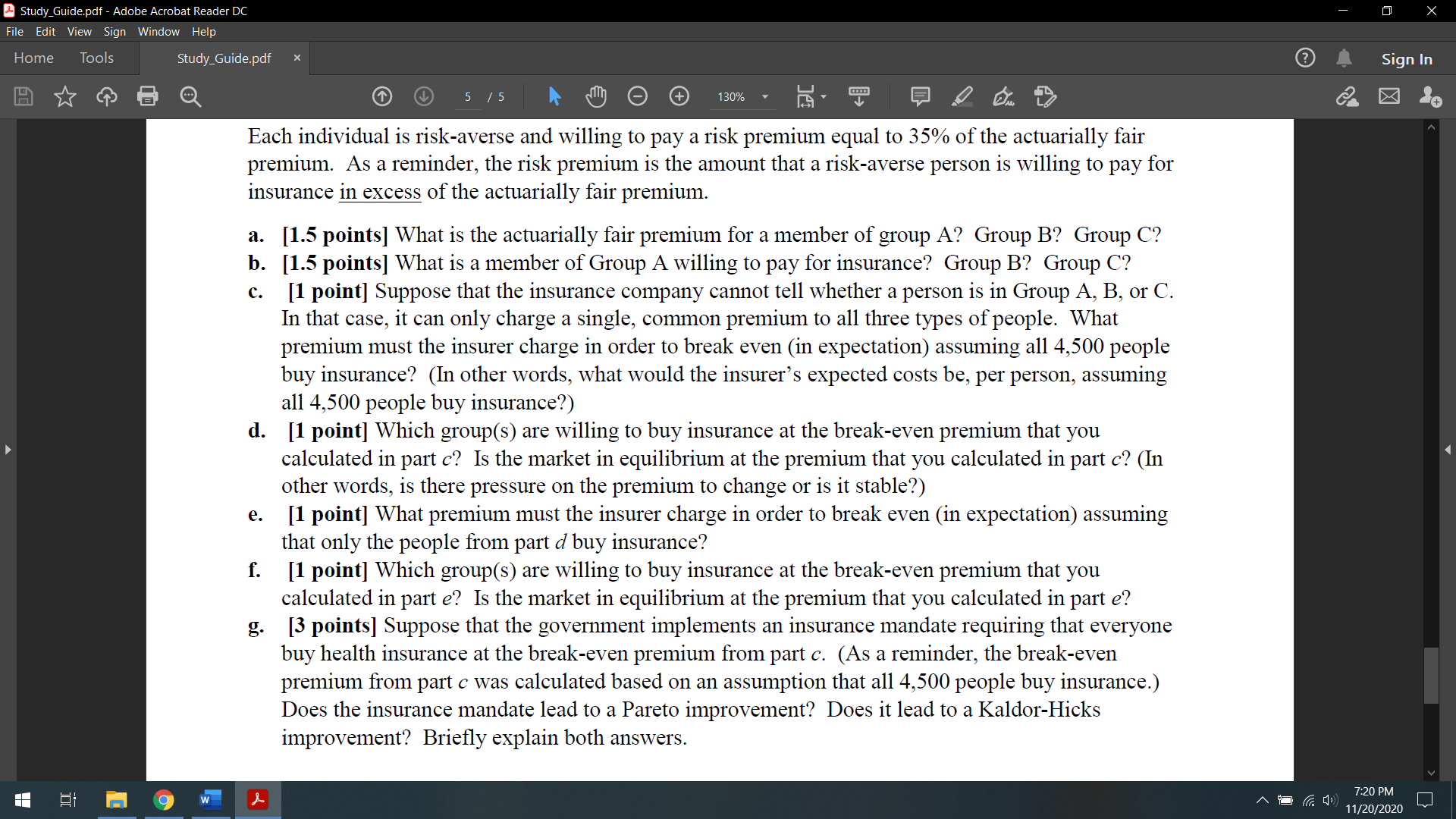8. [10 points total] 4,500 people run the risk of getting seriously sick this year and ending up in the hospital. If an individual gets sick, they will incur medical expenses of $18,000. The 4,500 people can be divided into three groups. The 1,500 people in Group A have a 10% chance of getting seriously sick. The 1,500 people in group B have a 7% chance of getting seriously sick. The 1,500 people in group C have a 4% chance of getting seriously sick. . 7'1 9 PM 1 1 EZDHZUZD ' 8.50x 11.00 In Each individual is risk-averse and willing to pay a risk premium equal to 35% of the actuarially fair premium. As a reminder, the risk premium is the amount that a risk-averse person is Willing to pay for insurance in excess of the actuarially fair premium. 3. [1.5 points] What is the actuarially fair premium for a member of group A? Group B? Group C? b. [1.5 points] What is a member of Group A willing to pay for insurance? Group B? Group C? [1 point] Suppose that the insurance company cannot tell Whether a person is in Group A, B, or C, In that case, it can only charge a single, common premium to all three types of people, What premium must the insurer charge in order to break even (in expectation) assuming all 4,500 people buy insurance? (In other words, What would the insurer's expected costs be, per person, assuming all 4,500 people buy insurance?) [1 point] Which group(s) are willing to buy insurance at the break-even premium that you calculated in part c? Is the market in equilibrium at the premium that you calculated in part c? (In other words, is there pressure on the premium to change or is it stable?) [1 point] What premium must the insurer charge in order to break even (in expectation) assuming that only the people from part d buy insurance? [1 point] Which group(s) are willing to buy insurance at the break-even premium that you calculated in part 9? Is the market in equilibrium at the premium that you calculated in part a? [3 points] Suppose that the government implements an insurance mandate requiring that everyone buy health insurance at the break-even premium from part c, (As a reminder, the break-even premium from part c was calculated based on an assumption that all 4,500 people buy insurance) Does the insurance mandate lead to a Pareto improvement? Does it lead to a KaldorHicks improvement? Briey explain both answers








